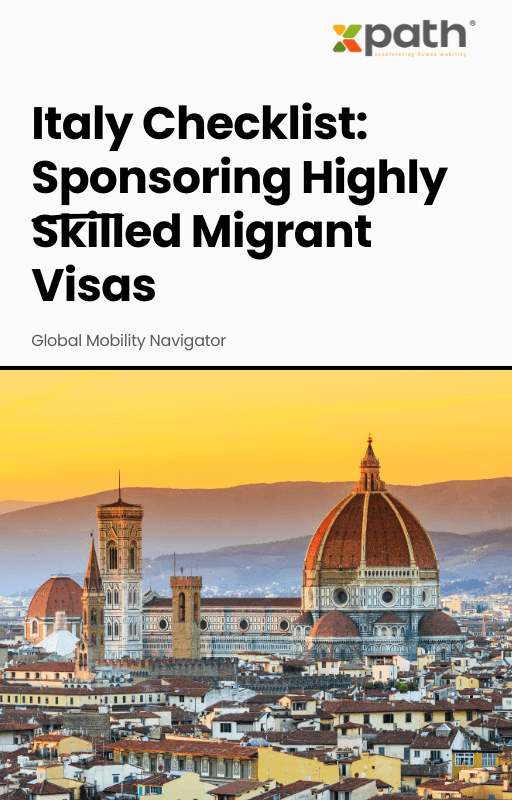Italy Checklist: Sponsoring Highly Skilled Migrant Visas
Grab a copy of a guide to international employee relocation
View E-bookTo effectively engage and guide stakeholders in enhancing their Mobility program, it is crucial to understand the art of strategic communication and its role in achieving organizational success. This guide goes into the essential steps to not only recognize but also to captivate key stakeholders, ensuring that your Mobility program aligns with and supports the broader objectives of your organization.
From crafting a mission statement that resonates with your company’s ethos to identifying and actively engaging with the right stakeholders, this article provides a detailed roadmap to transforming your Mobility program into a pivotal element of your business strategy.
Crafting a Compelling Mission Statement:
The journey begins with defining a clear and compelling Mobility mission statement. This statement should resonate with your company’s overall vision and values, encapsulating the goals and methodologies of the Mobility program. It’s crucial to align this mission with the objectives of critical departments such as HR, Finance, Payroll, Procurement, Risk, and Compliance. Their insights and needs should shape the mission, ensuring it’s relevant and impactful.
Understanding Stakeholder Dynamics:
Not all stakeholders carry equal weight in influencing the Mobility program. It’s essential to identify and prioritize stakeholders based on their potential impact and interest. Some stakeholders may hold significant influence but little interest in Mobility, while others might be essential gatekeepers with a lower organizational profile. Recognizing these dynamics helps in tailoring your engagement strategy effectively.
Communicating the Benefits:
The next step is to articulate how the Mobility program benefits each stakeholder. Develop at least three key messages that resonate with their specific interests and roles. These messages should highlight the positive impacts of Talent Mobility on their business functions and the organization as a whole.
Tailored Communication Plans:
With a clear understanding of each stakeholder’s role and interest in Mobility, create a tailored communication plan. This might involve scheduling regular meetings, sharing relevant data, and providing educational resources. It’s crucial to gauge and respond to their level of interest and influence, offering the right amount of information and interaction.
Committing to a Plan:
Document your communication plan and integrate it into your calendar to ensure accountability and consistency. Regularly scheduled outreach and updates are vital for maintaining momentum and keeping stakeholders engaged.
Beyond the Meetings:
Stakeholder engagement is not a one-time effort but a continuous process. It involves monitoring and adapting your communication strategies, generating reports, and being proactive in addressing emerging issues or concerns.
Handling Conflicts and Building Relationships:
Recognize that not all stakeholders will be supportive initially. Be prepared to listen to concerns, identify potential conflicts, and seek strategic compromises. Building relationships based on mutual benefits is key to long-term success.
Implementing a successful Mobility program requires more than just setting strategies and metrics; it demands active and ongoing stakeholder engagement. By following these seven steps, you can effectively mobilize support, harness enthusiasm, and drive the success of your Mobility program.

Italy Checklist: Sponsoring Highly Skilled Migrant Visas
Grab a copy of a guide to international employee relocation
View E-book